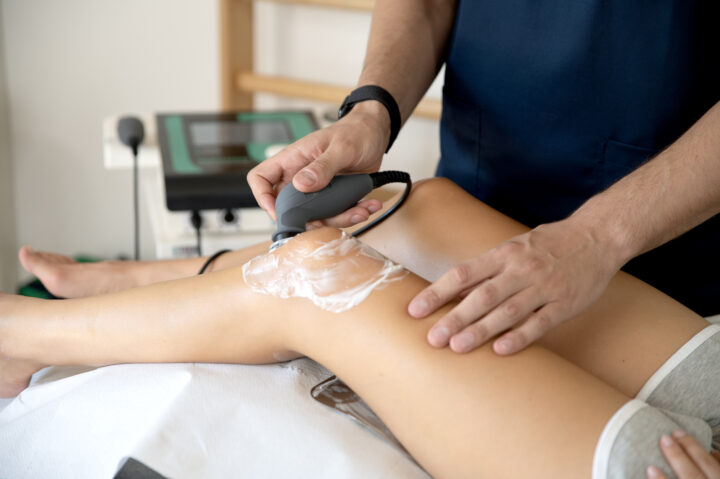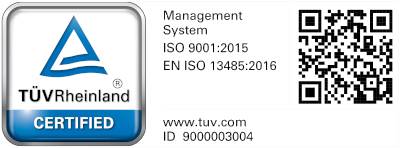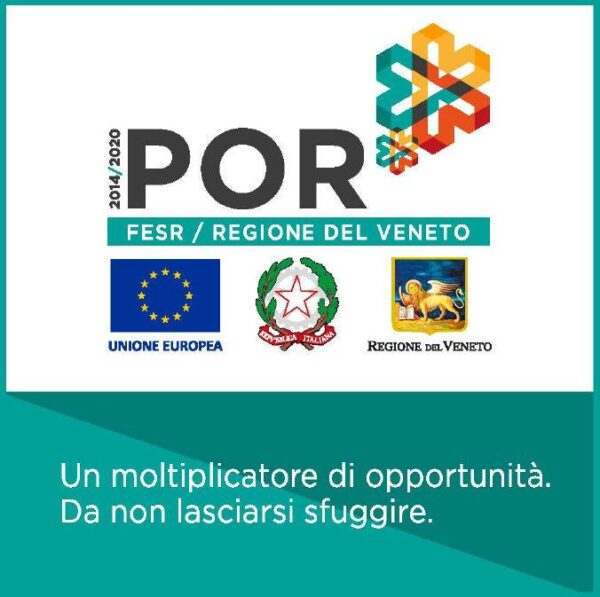- Tecar therapy for patellofemoral chondropathy
- Tecar therapy for knee bursitis
- Tecar therapy for iliotibial band syndrome
- Benefits of Tecar therapy for the knee
- How to perform Tecar therapy with I-Tech Medical Division devices
- I-Tech Medical Division devices for tecar therapy
- Complementary remedies to tecar therapy for the knee
The knee is one of the most stressed and strained joints, both during sports and in everyday working life. However, it can also cause problems for those who lead a sedentary lifestyle.
Tecar therapy, more commonly known as ‘Tecar’, is now a valuable ally in reducing inflammation and pain. Thanks to appropriate adjustments and customisation, this therapy is effective for both sedentary people and athletes, whether amateur or professional.
Tecar therapy is also recommended for the treatment of other joints, including the shoulder, elbow, wrist, ankle, cervical, dorsal and lumbar spine.
What is Tecar therapy and how does it work?
Tecar therapy, or diathermy in its most general sense, is a therapy that uses high-frequency electrical current to stimulate tissue repair processes and reduce inflammation and pain.
The working principles of Tecar therapy
Tecar therapy is based on the physical principle of the capacitor, which allows it to act effectively on both superficial and deep tissues.
Its specificity depends on the parameters of use and the handpiece selected by the therapist, chosen according to the condition being treated.
Knee conditions that can be treated with Tecar therapy
Thanks to its characteristics, Tecar therapy can effectively treat both acute and chronic conditions: the therapist simply adjusts the intensity according to the individual problem in order to optimise the treatment. This allows the treatment to be tailored to the real needs of each person, for targeted and long-lasting results.
It is the doctor’s responsibility to assess the suitability of Tecar therapy for a specific clinical condition, particularly an orthopaedic specialist or physiatrist.
In general, the therapy is suitable for most knee problems. The condition and state of the joint must be taken into account in order to select the correct operating mode (capacitive or resistive) and the level of energy to be used.

Tecar therapy for swollen knees
In the presence of a swollen knee, the resistive handpiece is recommended, as it optimises the action on the cartilage and deep structures.
Adjusting the intensity is key: a medium-low setting limits the hyperthermic effect, helping to reduce inflammation and optimise drainage of the joint.
Higher intensities amplify the hyperthermic effect and are more suitable for chronic conditions, which benefit from the increased vascularisation induced by the higher thermal component.
Tecar therapy for patellar tendinitis
Tendinitis is an inflammatory condition often caused by functional overload, which tends to become chronic over time.
Tecar therapy offers excellent results in the acute phase, when the hyperthermic effect must be present but limited.
In the chronic phase, the effectiveness of the therapy increases thanks to a higher hyperthermic level, which promotes a marked revascularizing effect at the local level.
Tecar therapy for ligament injuries
The positive effect of Tecar therapy in cases of ligament injuries is mainly linked to the reduction of inflammation in the entire joint.
The regenerative effect, which is possible in cases of partial injury, is still significant thanks to the therapy’s ability to reach deep structures, especially when using the resistive mode with a bipolar handpiece and short geometry.
Tecar therapy for patellofemoral chondropathy
In the presence of patellofemoral chondropathy, diathermy is one of the most recommended physical therapies for reducing inflammation, oedema and pain.
It is important to use it in athermic mode in order to maximise the anti-inflammatory effect.
This setting limits the hyperthermic effect, which is not beneficial and should be avoided in cases of acute inflammation.
Tecar therapy for knee bursitis
Knee bursitis is generally associated with inflammation of Hoffa’s body, located in the lower part of the joint. The main causes include mechanical, compressive or overuse stress.
In the presence of this condition, the primary objective of Tecar therapy is to achieve an anti-inflammatory effect, obtained using a low energy level to avoid a marked hyperthermic action.
Tecar therapy for iliotibial band syndrome
This syndrome is caused by a complex condition affecting both the tendons and muscles. Treatment is therefore divided into two phases.
The first involves the use of the capacitive mode with a hyperthermic effect on the muscles, with the aim of reducing muscle tension and the resulting tendon overload.
The second phase is carried out in resistive mode, initially athermic and then hyperthermic, at the tendon level, with the aim of reducing inflammation and promoting proper vascularisation for tissue recovery.
Benefits of Tecar therapy for the knee
The use of this therapy for knee problems is mainly aimed at:
– Reduce swelling
– Reduce inflammation
– Reduce pain
– Improve healing
– Improve overall knee function
The first results can be felt within 2-3 sessions, although in some cases benefits are observed after the first session. However, these initial effects tend not to be stable, which is why a minimum cycle of 5 sessions is recommended to achieve longer-lasting results between sessions.

How to perform Tecar therapy with I-Tech Medical Division devices
Reatherm and Reacare can be used in various diagnostic contexts, both in capacitive mode, which is more suitable for treating soft tissues, and in resistive mode, which mainly targets muscle and more superficial tissues.
For continuous use, specific parameters can be programmed and saved in the free memories to ensure perfect treatment customisation and reduce start-up times.
I-Tech Medical Division devices for tecar therapy
Our diathermy devices are latest-generation that allow optimal management of treatment intensity, with the possibility of customising and storing the set parameters.
This is possible thanks to their multi-frequency (Reatherm 401 and ReaCare 201) and frequency modulation system (1÷100 Hz), which allows the treatment depth to be adapted to individual needs.
These features facilitate interaction with the patient and allow the therapy to be adapted to the different stages of the treatment, optimising working times and maximising results.
Complementary remedies to tecar therapy for the knee
In knee pathologies, tecar therapy is currently the state of the art in physical therapies, as it can provide a therapeutic approach applicable to most common conditions, both in the acute and chronic phases.
In most cases, combining diathermy with kinesitherapy sessions maximises results, combining inflammation reduction with active stabilisation that reduces mechanical stress.
Even a temporary reduction in intense sports or work activities during the treatment period can promote a faster and more effective regression of symptoms.
In general, it is advisable to avoid strain to allow the body to benefit from the regenerating effect induced by the therapy, limiting situations that may cause pain wherever possible.
It is essential to strictly follow the instructions of the specialist and therapist.
Would you like to integrate Tecar therapy into your clinical practice?
Click the button below to discover I-Tech Medical Division devices and choose the best solution for you and your patients.






